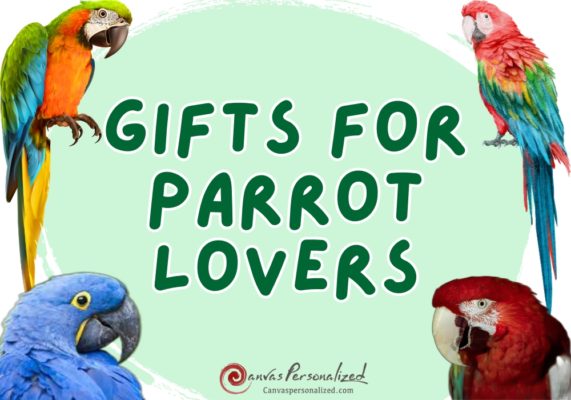Even though parakeets are known as easy-to-care-for birds for beginners, having a bird is still a big duty that shouldn’t be taken lightly. Even though they are smaller than other birds, parakeets still need as much care and attention as possible. If you’ve decided to welcome one (or more) of these birds into your house, here is a comprehensive parakeet care guide to keeping them healthy and happy. Take a look right now with Canvas Personalized!
Parakeet characteristics
| Care Difficulty | Beginner |
| Average Life Span | 10–12 years |
| Average Adult Size | 7” long, from head to the end of tail |
| Diet | Herbivorous |
| Minimum Habitat Size | 18” W x 18” D x 18” H |
1. Handling
Allow your parakeet time to become used to its new environment before trying to handle it. When they first get home, put a towel, blanket, or cage cover over half their cage. This will allow them to explore their new home at their own pace while giving them some privacy.
Allow your pet at least 48 hours to adjust to its new environment. You and everyone else should stay away from their cage while they relax. You should not leave them alone for long periods; they should become accustomed to household noise and activities. A common gathering place like the living room is an excellent option.
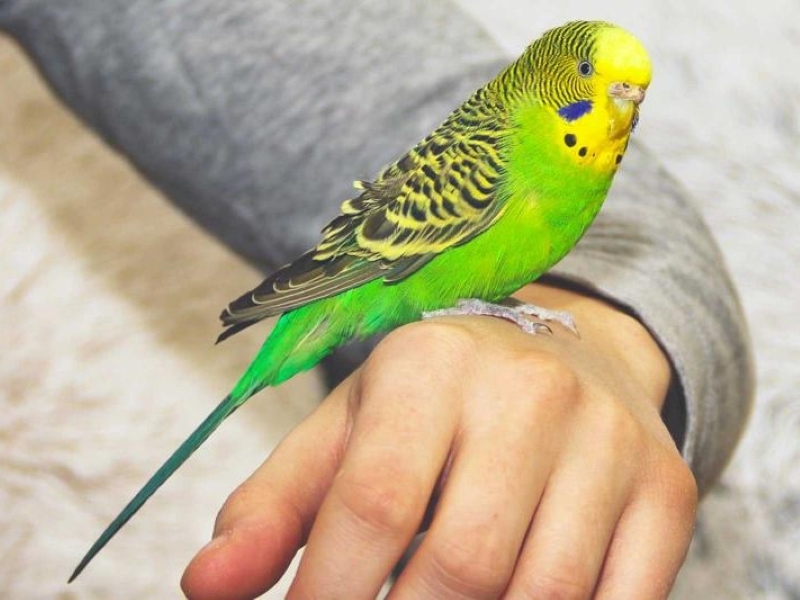
If your parakeet is used to being handled
They can start interacting with others once 48 hours have elapsed. Place your hand in the bottom of the cage softly and see whether the bird is ready to move onto your palm. In addition, place your fingers near the parakeet’s feet; if it has been trained to do so, it should move onto them. You can also tell them to “step up,” which their former owner may have used to train them.
What to Do If Your Parakeet Refuses to Be Handled
If it has never been handled, it may take some time for your parakeet to become used to being handled and spending time outside its cage. Don’t start touching them right away if they seem to be going when you get close. Instead, move slowly toward their cage until you see them getting nervous. Stop and don’t go any further once you see that they are getting upset. Keep doing this until they let you get close enough to their box so that you can touch it.
As soon as they allow you to touch their cage, you may start providing them treats like millet. You can use fruit or other treats, but millet is long and gives you some space for your new pet, which makes them less stressed. Clip some millet into the cage if the birds won’t consume it. Don’t get down on yourself if this takes a while. Some parakeets get used to being handled quickly, while others may need to be trained for several weeks.
2. Habitat
Enclosure
A single parakeet needs a cage no less than 18 inches wide, 18 inches deep, and 24 inches high. A pair of parakeets requires a minimum space of 24 by 24 by 36 inches. Give them more horizontal room to move about in rather than vertically. The distance between each bar should be about half an inch.
Bedding
While a heavy layer of bedding isn’t necessary for parakeets, the bottom of the enclosure should always have a liner that can be removed for daily cleaning. Some cheap and safe choices for liners are:
- Paper towels
- Newspaper
- Brown paper bags
- Brown kraft paper rolls
- Butcher paper
Avoid using bright or shiny paper, like magazine paper, because it can harm birds. Bedding with many layers is more likely to retain mildew and germs. They also make it harder to see the droppings of parakeets, which is important for keeping an eye on their health.
Other Pets They Can Live With
Parakeets can live in the same cage as other small birds, but bigger birds need space. When a parakeet is out of its cage, it has to be in an environment free of its natural predators, including cats. Dogs and other animals with a strong instinct to hunt should be treated with the same caution. No parakeets should ever be left unattended with a large dog that may potentially break into their cage. A parakeet is safe to keep in the same room as other tiny animals, such as rabbits, mice, rats, and hedgehogs.
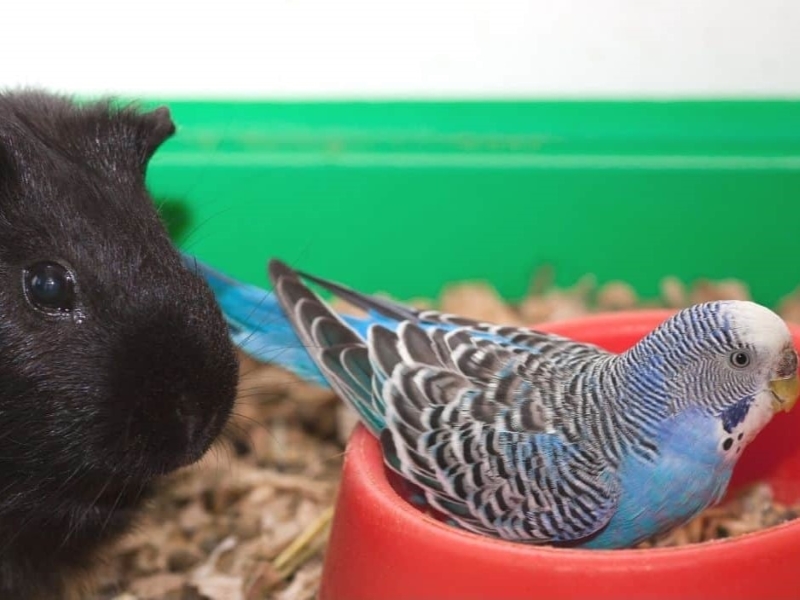
Feeding Dishes
Dishes for food and water can be hung from the cage bars or placed directly on the floor. When feeding, parakeets will try to balance on the edge of the dish. Whether used for water or food, hanging bowls made of plastic or metal must be cleaned daily. Check for cracks or sharp edges before using a plastic dish. Parakeets require individual water dishes large enough for them to soak in. Each parakeet should have its own space to avoid fights or rivalries at the feeder. Put out three bowls, one for water, one for dry food, and one for wet.
3. Diet
Since parakeets in the wild forage for a wide variety of foods, providing a varied diet for your pet is essential. Although seeds may be a healthy addition to a budgie’s diet, they shouldn’t make up too much of the bird’s food intake due to their high fat content. High-quality pelleted food makes up 60–70% of a parakeet’s diet, while the remaining 30–40% should come from fresh fruits and vegetables.
The following are examples of fruits and vegetables that parakeets typically enjoy:
Fruits
- Apples (no seeds)
- Berries
- Bananas
- Grapes
- Kiwis
- Mangos
- Melons
Vegetables
- Carrots
- Pumpkin
- Greens
- Sweet potato
- Broccoli
- Cucumber
Treats can comprise as much as 10% of your parakeet’s diet. Treats might include things like:
- Seed and millet sprays
- Seed and millet sticks
Foods to avoid
- Avocado
- Chocolate
- Caffeine
- Alcohol
- Dairy products
- Fruit pits and seeds
- Garlic & onion
- Raw potato
- Salty foods
- Green tomatoes
- Sugary foods
Maintaining a constant supply of filtered, fresh water is essential.
Supplements
Cuttle bones or mineral blocks are the best dietary supplements for parakeets. These are terrific low-cost sources of calcium and minerals.
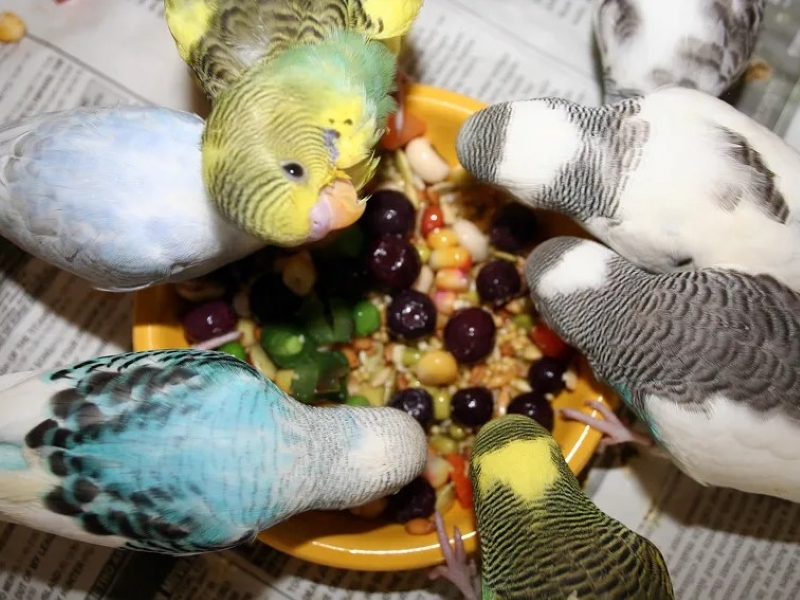
4. Daily Parakeet Care Guide
Grooming
Most parakeets will bathe in their water bowls whenever they need to. A misting spray bottle may be used to clean them weekly or biweekly. Parakeets seldom require beak trims, but regular nail trims are essential. The wings should also be trimmed, usually done every 2–3 months. This keeps them from hurting themselves or escaping away during flying.
Exercise
Parakeets may be injured if taken out of their cage, which is why the debate over whether or not to do so continues. We’ve found that letting your parakeet out of its cage at least once daily positively affects its health and happiness. Even if there are risks, they should get to know a safe place in the house than be kept in a cage all day.
Since parakeets are active birds, their time outside in their cage is very important. Even though they have things to play with in their cage, the best way to keep them happy is to let them move around in other open areas. Naturally, you’ll want to keep your house as secure as possible by closing all windows and doors and eliminating any crevices in which they may become trapped.
Socialization
Parakeets are friendly, outgoing birds who enjoy spending time with their owners. These birds congregate in huge groups in the wild because they feel more secure. Spending as much time as possible with your parakeet outside the cage is crucial if it doesn’t have a partner. Having a pair means they can entertain themselves and be less needy of your attention. In fact, studies have shown that cockatiels are significantly happier when kept in couples than when kept alone.
Entertainment
Parakeets need constant stimulation and playtime to thrive. They are easy to train and can learn tricks and instructions for things they do naturally, like flying to certain places and picking up things. Toys like ropes, swings, ladders, and food-foraging items may provide hours of entertainment.
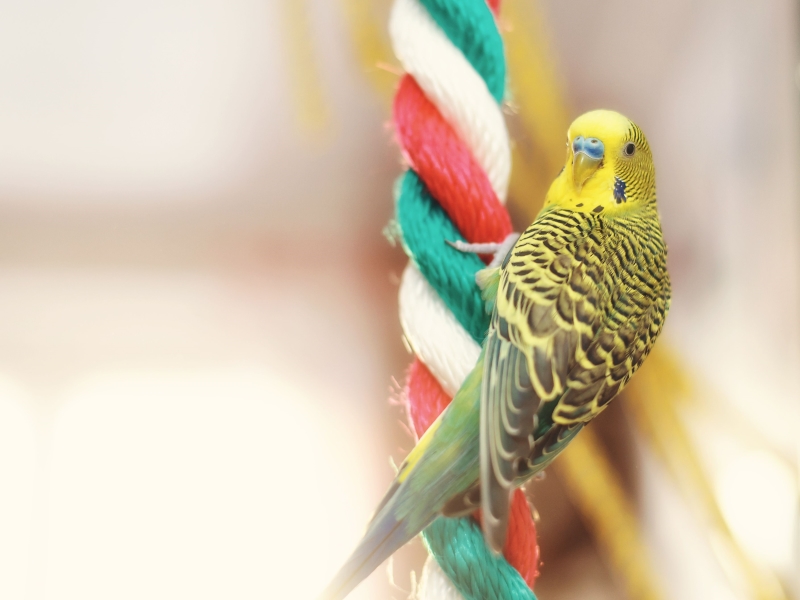
Making homemade toys is a popular pastime for parakeet owners. Hard metals, parakeet-safe woods, paper, cardboard, and natural fabrics are all safe for parakeets. Do not use any kind of glue or other adhesives. When stringing objects together or making attachments to the bars, choose textiles or ropes that won’t harm the birds.
5. Veterinary Parakeet Care Guide
Annual Care
Parakeets need to get annual checkups with a vet who specializes in treating birds. Parakeets, unlike dogs and cats, do not typically undergo diagnostic testing once a year; however, blood, urine, and other samples may be taken if necessary. During a checkup, it’s best to bring a sample of their poop from their cage in case your vet wants to look at or test it.

Signs of a Healthy Parakeet
- Ideal body state.
- Smooth, highly colored feathers.
- Clear and bright eyes.
- Smooth, healthy skin.
- Clean vent.
- Nares with no discharge or discoloration.
- Formed droppings that are a green-brown color with a small amount of white.
When to Call a Vet
It’s best to take your parakeet to the vet if you notice any changes in its behavior or appearance. Some warning signs of sickness are:
- Stools that are watery, runny, or off-color
- Sneezing
- Nasal bleeding or discolored fluff around the nostrils
- Shaking the tail
- Changes in color or texture anywhere on the body, including the skin, legs, feet, wings, and/or face.
- Open mouth breathing
- Broken, missing, or bleeding feathers
- Tail bobbing
- Lack of balance
- Lack of appetite
- Seizures
- Weakness
The following is a list of reputed animal hospitals and clinics that you may consult:
| Name | Information | Number |
| Avian and Exotic Animal Hospital | This hospital has four locations in Florida and specializes in exotic pet care. They have board-certified avian veterinarians on staff who are experienced in treating parakeets. | (305) 234-2473 |
| Bird and Exotic Hospital | This hospital is located in Bothell, Washington, and provides veterinary care for birds and other exotic pets. They have veterinarians on staff who are experienced in treating parakeets. | (212) 501-8750 |
| The Center for Avian and Exotic Medicine | This center is located in New York City and is dedicated to caring for birds and other exotic animals. They have board-certified avian veterinarians on staff who can provide medical care for parakeets. | (847) 329-8709 |
| All Bird Clinic of the Palm Beaches | This clinic is located in Lake Worth, Florida, and specializes in the care of birds. They have experienced veterinarians on staff who are knowledgeable in treating parakeets. | (561) 641-2123 |
If you need veterinary treatment for your pet, it’s best to contact ahead and schedule an appointment to be sure the clinic is taking new patients and can offer the services you require.
In conclusion, caring for a parakeet requires dedication, patience, and knowledge of its basic needs. Remember to provide a balanced diet, regular exercise, and a clean living environment. With the information in this parakeet care guide, Canvas Personalized hope you can confidently care for your pet birds and ensure their well-being for years.








